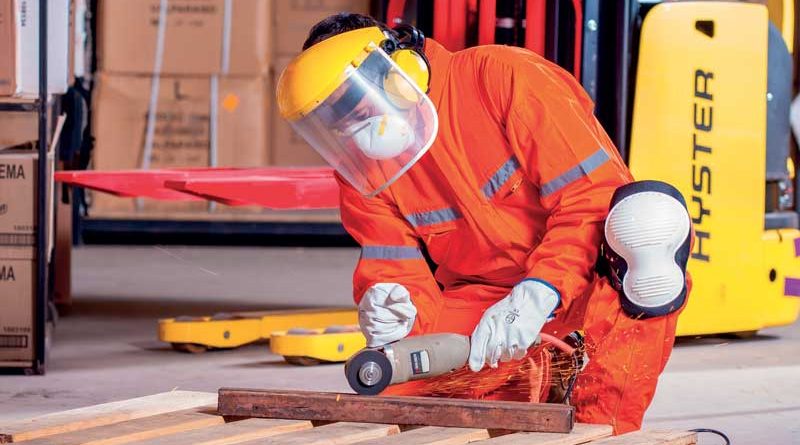Certifications for health and safety on the workplace
UNI ISO 45001:2018 is the first ISO norm certifying management systems for health and safety on the workplace, This certification is a guarantee as to the respect of the norms, records the company’s quality and protects competitiveness
by Renato Uggeri
Following the publication of the UNI ISO 45001 for the certification of management systems for health and safety on the workplace, organisms have three years to complete the migration of approved certifications from BS OHSAS 18001 to the new norm.
Which are the characteristics of the new norm?
The international legislation keeps abreast of the current globalization process: publication of ISO 45001:2018 on March 12th and its transposition by UNI as the Italian norm UNI ISO 45001:2018 gave rise to the first ISO norm certifying management systems for health and safety on the workplace. Several characteristics harmonize ISO 45001 with other norms concerning management systems. To ensure uniformity and encourage the integration of certified systems, the document uses HLS-HIGH Level Structure and transposes its main innovations, such as, an approach based on risk, the analysis of the context in which the organization operates, the active participation of top management and the consultation and participation of workers. Three years after its publication, the ISO 45001:2018 norm will replace the BS OHSAS 18001:2007 norm which as from March 12th, 2021, will no longer be valid. The decision was made by the IAF (International Accreditation Forum) General Assembly in 2016, and confirmed by IAF document MD 21:2018 “Requirements for the Migration to ISO 45001:2018 from OHSAS 18001:2007”, which provided a uniform definition of the migration process for certifications regarding the management system for health and safety on the workplace conferred worldwide by credited bodies.
The migration of certifications
During the migration process, both certifications issued in compliance with ISO 45001:2018 and with BS OHSAS 18001:2007 will be valid. However, certification issued using the latter standard after March 12th, 2018, will have to bear March 11th, 2021, as expiry date. Furthermore, two years after publication of the ISO norm, that is, as from March 12th, 2020, it will only be possible to perform certification audits of management systems for health and safety on the workplace according to requisites laid down by the ISO 45001:2018 norm. Certifying bodies must also verify that personnel directly involved in the evaluation activities have been trained as to the new requisites and must verify that an adequate competence level has been reached.
In undergoing the migration process of credited certifications, it is therefore necessary for the certifying bodies to be fully aware both of the timing and of the scenario which is emerging internationally.
International documents
To help this process, on January 18th IAF published the IAF MD 21 document, which specifies requirements for migration of certifications to ISO 45001:2018; besides, from January 25th the IAF MD 22:2018 document “Application of ISO/IEC 17021-1 for the Certification of Occupational Health and Safety Management System (OH&SMS)” is in force, defining criteria for the crediting of certifying bodies of management systems for health and safety on the workplace, without replacing those defined by ISO/IEC 17021-1:2015 which remain applicable. Finally, the technical specification, ISO/IEC TS 17021-10:2018 “Conformity assessment – Requirements for bodies providing audit and certification of management systems – Part 10: Competence requirements for auditing and certification of occupational health and safety management systems”, has been published, regarding the competence requirements of personnel involved in the certification process of management systems for health and safety on the workplace.
Certified companies are increasing fast
Today almost 17,000 companies have a certified management system according to the BS OHSAS 18001 norm, 9% with respect to 2016 and 32% more with respect to three years ago. Certifications bring about efficiency dynamics which affect the entire corporate structure and increase its competitiveness, even by means of an improvement of the image on the market.
A qualitative research carried out on a sample of 311 companies certified in accordance with the BS OHSAS 18001 norm, carried out by Inail, Accredia and Aicq by means of a questionnaire proposed to safety managers and top management showed that almost all the companies, following the certification of their management system, verified that safety performances had improved, in terms of the number of accidents and work-related illnesses and prevented accidents, hours of training and lack of conformity managed.
The advantages of certification
Inail grants reductions of the insurance premium to companies which have carried out improvements or accident prevention actions in order to safeguard the health and safety conditions of workers. Actions which allow to obtain such reductions are those listed in Form OT 24 (variation of the tariff rate in case of prevention).
Among these actions, certification based on the OHSAS 18001 standard (and following that, on ISO 45001) is the one which allows and presumably will allow to reach the highest points to obtain a discount on the premium. Inail also grants capital financing (ISI scheme) for expenses borne for projects aimed at improving health and safety levels on the workplace, also envisaging the case of adoption of organizational models of management of workers’ health and safety. In the best part of cases, the decision to certify the management system derives from an initiative by corporate management or by a request from the market.
The improvement of the image which the certified company experiences as perceived by the clients is an asset for the company which brings with it an important return in terms of competitiveness.
At the same time, about one third of the certified companies identifies a limit stopping a broader use of certification in the lack of knowledge of its benefits and for companies in the building sector, in the high incidence of start-up costs.

